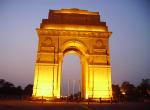India has been debating the issue of cross-media ownership for the last over 60 years.However, it is only now that it is being raised by Telecom Regulatory Authority of India (TRAI) at the behest of the Ministry of Information and Broadcasting for the first time. In fact, TRAI in its paper expresses limitation on checkmating cross-media ownership. Rather, softly it has given it up. TRAI Chairman Rahul Khullar said the regulator would, with the help of the Competition Commission of India (CCI), attempt to ensure that there are a minimum number of mergers and acquisitions. A consultation paper will spell out restrictions, make mandatory disclosure requirements, spell out levels of market share which will ensure plurality and diversity, list general disqualifications, recommend how cross media ownership can be dealt with, set rules for disaggregated markets, and ensure minimum mergers and acquisitions
The Indian Media and entertainment industry is estimated at about Rs 1052 billion and is growing by the day. Apart from the monetary value, the industry is important as it can influence opinion in political domain and trends in business. Groups owning a cross section of media have the capacity to tilt the balance in their favour though the industry does not accept it.
Veteran journalist Paranjoy Guha Thakurta says the sheer number of media organisations and outlets often conceals the fact there is dominance over specific markets and market segments by a few players – in other words, the markets are often oligopolistic in character. The absence of restrictions on cross-media ownership implies that particular companies or groups or conglomerates dominate markets both vertically (that is, across different media such as print, radio, television and the internet) as well as horizontally (namely, in particular geographical regions).
It is also well-known that political parties and persons with political affiliation own/control increasing sections of the media in India. There are two kinds of such newspapers or channels. The one which are known to be published by political parties while others are published as independent papers or run as independent channels but show a marked tilt in favour of the owner’s political preference.
There are a few instances where the promoters have used the profits from their media operation to diversify into other unrelated businesses. These are the issues that need to be addressed to strengthen the democratic principles. But even TRAI guidelines are not so specific.
The credibility of news has always been an issue. But despite concerns about it, the Nehru government did not do much to control varied interests of newspaper owners. It was debated often. Everyone stressed on the merits of having a free press. Many agreed that when a newspaper owner has varied interests to serve, it compromises with news publication.
Journalism evolved in India over a long period since the first newspaper, Bengal Gazette and Calcutta Advertiser of James Hickey, was published in 1780. Journalism took a new turn in the history of the sub-continent and the Indian press gradually reached a stage where it could begin to influence the country’s economics, politics and culture. Here we are talking of a period when the Indian press was confronted with the might of British imperialism in whose domain the sun never set, as was the common refrain.
The press in the Indian subcontinent developed precisely for awakening of the masses in the pre-independence era, pitted against colonialism and imperialist tyranny. Marx had also commented in 1853, while discussing about the probable results of British rule in India, that this was the first time a free press, owned by the common inheritors of Indians and Europeans, had originated in Asiatic societies, and it would become a new and powerful instrument of India’s regeneration. In so far as the first half of the 20th century is concerned, the press played precisely this role in the sub-continent.
However, here we must bear in mind that the evolution of the press took place in the subcontinent on a totally different line after the country’s independence and partition in 1947. The Press Commission, formed under the chairmanship of J.S Rajyadhyaksh in 1952, thus drew attention to this aspect in the first part of its report, submitted in 1955.
He wrote, “Formerly, most of the Indian Press had only one objective and that was political emancipation of the country. Most of the journalists of that era were actuated by fervent patriotism and a feeling that they had a mission to perform and a message to convey. Political emancipation having been achieved, the emphasis has shifted and the newspapers are no longer run as a mission, but have become commercial ventures.” (Press Commision, p. 482).
In the same report, the Commission also commented that now the big newspapers, in particular, either kept mum on important occasions or hesitated from leading the public opinion, because they have to take care of certain business interests; they moved very cautiously and they had to act on the orders of the powers-that-are.
Therefore, “some of them are partisan in the presentation of news in respect of the financial interests with which they are allied; there is a certain timidity to expose courageously the shortcomings of those who are in a position of power and authority; there is a tendency to suppress facts which are unfavourable to their own interests or to the financial interests with which they are associated”, Press Commission noted.
It was precisely this press which the late V.K. Krishna Menon, an important member of Jawaharlal Nehru’s Cabinet, had dubbed as “the Jute Press”. The term originated as in early independent India most of the press was owned by jute industry barons and was used to further their own interests.There was another that was called “steel press” being owned primarily by the steel industry owners like the Tatas. The Mahalonobis Committee, which developed the Second Five-Year Plan of the country, also made very trenchant criticism of the role the press played in the concentration of wealth in a few hands
The Commission found that there was a great deal of scurrilous writing often directed against communities or groups, of indecency and vulgarity and personal attacks on individuals. It also noted that yellow journalism was on the increase in the country and was not particularly confined to any area or language. The commission, however, found that the well established, newspapers on the whole, had maintained a high standard of journalism.
It remarked that whatever the law relating the press may be, there would still be a large quantity of objectionable journalism, which, though not falling within the purview of the law, would still require some checking. It felt that the best way of maintaining professional standards of journalism would be to bring into existence a body of people principally connected with the industry whose responsibility would be to arbitrate on doubtful points and to ensure the punishment of any one guilty of infraction of good journalistic behavior. An important recommendation of the commission was the setting up of a statutory Press Council at the national level, consisting of press people and lay members.
The Second Press Commission was appointed on May 29, 1978 under the Chairmanship of PC Goswami. Later KK Mathew became the Chairman and submitted its report in 1982. The Second Press Commission wanted the press to be neither a mindless adversary nor an unquestioning ally. The Commission wanted the press to play a responsible role in the development process. It opined that the press should be widely accessible to the people if it is to reflect their aspirations and problems.
The question of urban bias too received attention of the Commission. The Commission said that for development to take place, internal stability was as important as safeguarding national security. The Commission also highlighted the role (and, therefore, responsibility) of the press in preventing and deflating communal conflict.
The recommendation of the First Press Commission for the first time provided the idea of what a responsible press should be.
The Second Press Commission formulated in a clear manner that development should be the central focus of the press in a country, which is building itself to become a self-reliant and prosperous society. The Commission declared that a responsible press could also be a free press and vice versa. Freedom and responsibility are complimentary but not contradictory terms, it said.
The Press Commissions recommended that newspaper industries should be separated from industries and commercial interests. It also recommended that newspaper industries should be relieved from the impact of foreign capital.
Much of it remained on paper. In 1955, the cabinet agreed on restraining foreign capital in newspapers but it was relaxed in 2000, which allowed 26 per cent foreign equity in newspapers but it ordained that the Editor has to be an Indian.
Does it make much of a difference? If we go by the First Press Commission, it does not. It noted that even in early 1950s, there was decline in the status of the Editor particularly in daily newspapers.
It has only accentuated as some papers like Times of India sometime back had even stopped giving the name of the Editor in their publications. In many newspapers, editorial control is being taken over by the advertising and managerial functionaries.
Promoting news of other group industries either directly or surreptitiously has become more a rule than exception. The line between objective journalism and promotion of group industries has blurred.
Why should it not be? A group like Times of India owns 40 different media and other businesses. So does Hindustan Times, Ananda Bazaar Patrika, Jagaran, Malayala Manorama, Zee and Bhaskar group.
It is possible to visualize three types of accumulation of ownership interest in the media: cross-media ownership across the various carriers such as television, radio or print; consolidation, including vertical integration among media operations of content, carrier and distributor within a media segment such as television or radio; and market share dominance in a given geography within each media segment.
In the diverse cultural, lingual and social settings in our country, it may be difficult to visualize conditions of media dominance leading to market monopoly.
However, there are already at least six states where a single media house has a clear and growing dominance. These are media groups that are emerging as national conglomerates. They are all in the news business as well as in entertainment, media distribution and network business. They own newspapers, magazines, radio, cable TV and television channels, to name their key businesses.
The latest development of purchase of The Washington Post in the US by Amazon is an instance of the emerging threats and interests of powerful groups in vibrant media organisations.
Most media companies in India and abroad are integrating vertically to sell cross-media, often acquiring or building multimedia platforms. News Corp.’s Star TV India and Sun TV Network Ltd, Zee group and others already own DTH and cable distribution platforms. Star’s cross-media India operations include television channels, Internet offerings, radio, mobile entertainment and home video (incidentally, 11 cable distribution companies provide some 400 television channels in India).
Sun Network has 14 TV channels in four states, cable assets, four magazines, radio stations and two newspapers. In Tamil Nadu, the dominance of Sun in cable and satellite TV (channels and distribution network) and now in the DTH market is quite visible. Sun TV and Jaya TV have evolved as rivals not only in the business sector but also the political set up as they represent two important political parties in the state.
In Andhra, dominance of Eenadu group was challenged by YS Rajashekhar Reddy’s Sakshi – a television channel and some magazines. Some years back some of the news channels of Eenadu group despite bearing the name have changed hands. Some of these have been taken over by TV 18 group.
In India, there is no general policy on ownership and cross-media restrictions, as far as restrictions between print and electronic media are concerned. However, the restrictions for different segments within the broadcasting sector are dictated by the policy framework for each segment, such as DTH guidelines or FM radio policy.
It is indeed time to debate regulatory issues for cross-media ownership and, in the absence of an independent media regulator, the TRAI discussions have long-term implications for the critical and booming Indian media industry, says P.N. Vasanti, Director of New Delhi-based multidisciplinary research organization, Centre for Media Studies.
The Hyderabad-based Adminstrative Staff College of India (ASCI) in its 200-page report has pointed out that there is “ample evidence of market dominance” in specific media markets and argued in favour of an “appropriate” regulatory framework to enforce cross-media ownership restrictions, especially in regional media markets where there is “significant concentration” and market dominance in comparison to national markets (for the Hindi and English media). The government sat over the report for three years till the parliamentary standing committee pulled it up.
Paramita Das Gupta of ASCI named Sun TV, Essel Group, Star India, and Reliance ADAG as the top houses with large-scale horizontal and vertical cross media ownership, while five other major groups owned the largest number of TV and radio channels.
She referred to the Broadcast Services Regulation Bill 2007, and wondered how the government had arrived at the figure of 20 per cent cross-media ownership.
In India, there is proliferation of publications, radio stations, television channels, and internet websites. It ensures one thing - plurality, diversity, and consumer choice. There were over 82,000 publications registered with the Registrar of Newspapers as on 31 March 2011. There are over 250 FM (frequency modulation) radio stations in the country (and the number is likely to cross 1,200 in five years) – curiously, India is the only democracy in the world where news on the radio is still a monopoly of the government.
The Ministry of Information & Broadcasting has allowed nearly 800 television channels to uplink or downlink from the country, including over 300 which claim to be television channels broadcasting “news and current affairs”. There is an unspecified number of websites aimed at Indians.
But number of registration and domination is not the same. The media scenario is dominated by less than a hundred large groups or conglomerates, which exercise considerable influence on what is read, heard, and watched, says Guha Thakurta. One example will illustrate this contention. Delhi is the only urban area in the world with 16 English daily newspapers; the top three publications, the Times of India, the Hindustan Times, and the Economic Times, would account for over three-fourths of the total market for all English dailies.
Similar is the situation Kolkata which is dominated by Telegraph, Ananda Bazar Patrika, (both ABP group, which has partnership with the Star News), Times of India, Pratidin and Vartaman. Chennai has The Hindu, New Indian Express and some Tamil papers. Mumbai has Times of India, DNA, Free Press Journal, and Marathi papers.
Every other region has one or the other group that dominates certain geographical areas.
The Parliamentary Standing Committee on IT, headed by Congress MP Rao Inderjit Singh, noted that the issue of restrictions on cross-media ownership “merits urgent attention” and needs “to be addressed before it emerges as a threat to our democratic structure”. It urged the Ministry to “formulate” its stand on the issue in coordination with the TRAI “after taking into account” international practices.
Indeed, it is so important as Kuldip Nayar said sometime back. He says, “A reader may be shocked to know that the news he avidly reads is paid for. His frustration and helplessness are heightened because he does not realise which part of the story is news and which part is fake.” Nayar was speaking in terms of the violation of editorial standards by the Bennet Colman group, which “does not bother the Jain brothers because they treat the profession as an industry to earn money. They feel proud that they have torn ethics into tatters and have still remained the No. 1 newspaper in India. Not only that, they make more money than probably any other newspaper in the world. The great Rupert Murdoch's empire is 20 times bigger than the Times of India. Yet he earns less profit”.
Media is beset with problems and blatant violation of norms. Working Journalists Act that governs the wages and service conditions of journalists and newspaper workers as well as ensures freedom to the journalist has become a virtually a dead law. The government never tried to enforce it. Media remains the worst employer.
However, as we have seen, the large conglomerates of the Indian media are usually groups that own different companies. This allows them to have controlling stakes both in broadcasting and distribution by acquiring licences under their different subsidiary companies, thus totally bypassing current restrictions and defeating the purpose of their existence in the first place.
In a scenario like this, imposing curbs is a complex task.But it is not insurmountable. The US forced Rupert Murdoch to abide by the restrictions. Most other countries in the world, including the United Kingdom, France, and Canada have such provisions. The UK swooped down on Newscorp for malpractices.
While TRAI is making a feeble bid, it remains to be seen how much it succeeds. For the functioning of a vibrant democracy, cross-media ownership remains a threat. It needs to be checked. Stringent norms are the need. But would it ever happen amid divergent interests of the people who own the media and also those who have enough clout to influence those who are in power. The nation would be watching the developments with baited breathe.
But there are reservations also whether TRAI, which has an entirely different mandate should be entrusted with the job or not. Disagreeing with the current demands of the telecom regulator, Rohit Bansal, CEO and Co-Founder, India Strategy Group, Hammurabi & Solomon Consulting remarked, “Conceptually, I don’t see the legal basis in the reference made to TRAI. Since when is it in TRAI’s jurisdiction to be sitting in judgement over media ownership?”
Bansal further asked, “These messiahs of ‘plurality’ cannot see an elephant in the room called the internet – the mother of ‘plurality’ among print, television, radio, broadcast distribution platforms, smart phones and the social media? If they do, how about eschewing the smokescreen of ‘plurality’ and setting the telecom terrier tilting at owners of the Internet!”
Meanwhile, supporting the regulator’s move, John Thomas, Former Editor, Operations, Vijay Times Bangalore said, “TRAI’s notification is a positive step in establishing transparency in the system. Because the media publishes news, and the same may be taken as a product if a media company has an interest in any corporation. I believe that in a step ahead, even journalists should declare their interests in the form of equity shares in any company so that a reader knows that the publisher or writer of this particular issue has an interest in the sector.”
(The author is National Secretary with the Indian Media Centre)
Published Date: 22nd August 2013, Image Source: http://www.viewpointonline.net








Post new comment